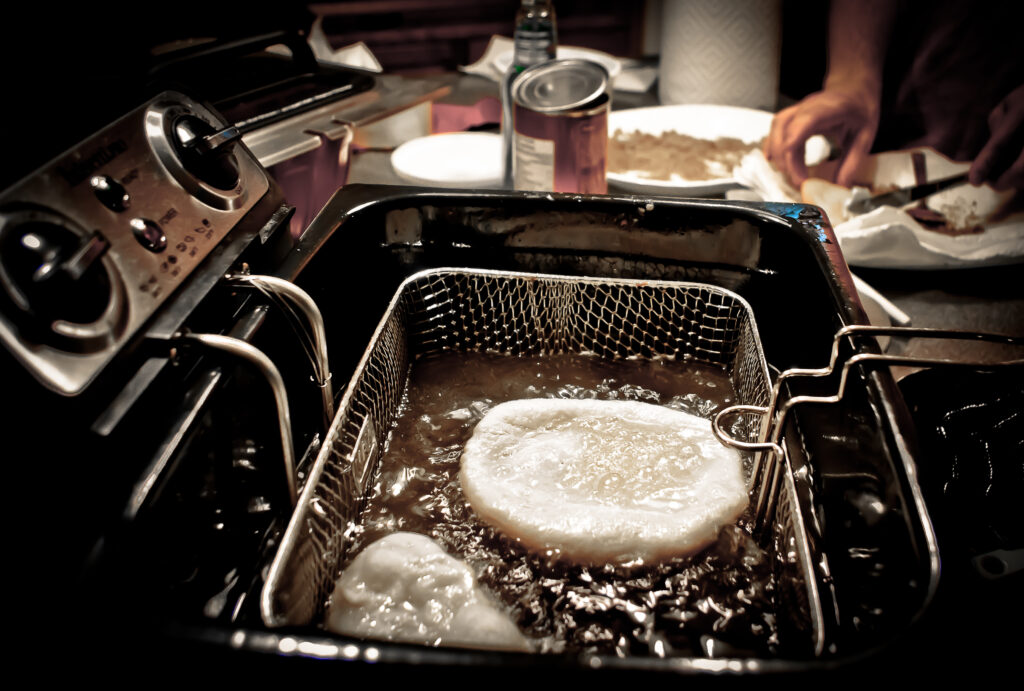If you’re a food lover, you’ve probably asked yourself at some point, What is better: deep fried or pan-frying? It’s a classic debate, especially when you’re deciding how to cook your favorite dish. Both methods offer their unique results, but the choice depends on what you’re looking for—whether it’s that extra crunch or a healthier, lighter meal. In this guide, we’ll break down the pros and cons of each cooking style, helping you decide the best way to go about it.
Table of Contents
Deep Frying vs. Pan-Frying: What’s the Difference?

Before diving in, let’s talk about what sets these two methods apart. Deep frying involves completely submerging food in hot oil, usually between 350°F and 375°F. This high temperature creates that crispy outer layer, making deep-fried foods like fries or fried chicken irresistible. Pan-frying, on the other hand, uses just a thin layer of oil in a skillet, offering a more delicate texture with far less oil.
So, when asking, What is better: deep-fried or pan-frying, you’re deciding between these two approaches—heavier and crispier vs. lighter and softer.
Why Choose Deep Frying?

There’s a reason why so many people love deep-fried foods—it’s all about that perfect crunch. Deep-fried food often comes out golden brown with an extra crispy exterior that’s hard to replicate with any other method.
Here’s why deep frying works:
- Texture Perfection: When deep fried, food has a crunchy outer layer while staying tender and juicy inside. It’s a texture that’s hard to match with pan-frying.
- Even Cooking: Since food is surrounded by hot oil, it cooks evenly on all sides, so it’s the go-to for foods like fried chicken or donuts.
- Speed: Deep frying is also quicker because of the high temperature. Meals can be ready in minutes, making it a fast option when time is limited.
But with these benefits come some downsides. Deep frying uses a lot of oil, and let’s be honest—it’s not the healthiest cooking method. Plus, the oil itself can become costly, and cleanup can be a hassle.
The Case for Pan-Frying

If deep frying feels a bit much for everyday cooking, pan-frying is a fantastic alternative. You still get a flavorful meal without having to use tons of oil or worry about your waistline.
What makes pan-frying great?
- Healthier Choice: Less oil means fewer calories, making pan-frying a more nutritious option for those looking to cut down on fats.
- Easier and Less Messy: You won’t need gallons of oil, and cleanup is way easier. All you need is a pan and a small amount of oil.
- Versatile: Pan-frying works well with various dishes, from vegetables to meats, and even fish. It’s a go-to method for cooking meals that don’t require that deep-fried crunch.
However, pan-frying isn’t perfect for everything. If you’re after that crisp, crunchy bite, pan-frying may leave you wanting. The texture is often softer, and it can take longer to get the level of browning you might want.
Which Method is Right for You?
Ultimately, when deciding between deep frying or pan-frying, the choice depends on your dish and your health goals. If you’re making something that requires a crispy texture, deep frying is the way to go. But if you’re looking for a lighter, everyday cooking method, pan-frying is your best bet.
For crispy, indulgent treats, there’s nothing like deep frying. But for a healthier, everyday meal that still delivers flavor, pan-frying is often the smarter option.
Summary
So, what is better: deep-fried or pan-frying? There’s no one-size-fits-all answer. It all boils down to what you’re cooking and what you’re aiming for—health or indulgence, quick cooking, or more control over your dish’s texture. Both methods have their place in the kitchen, and knowing when to use each one can take your cooking to the next level. Whether you want a light pan-fried fish or crispy deep-fried chicken, now you know the benefits and trade-offs of each method.




